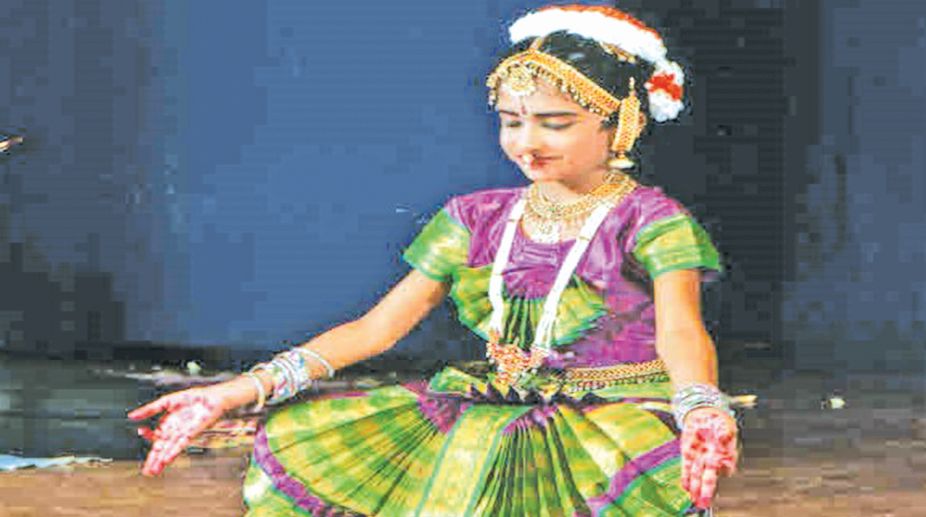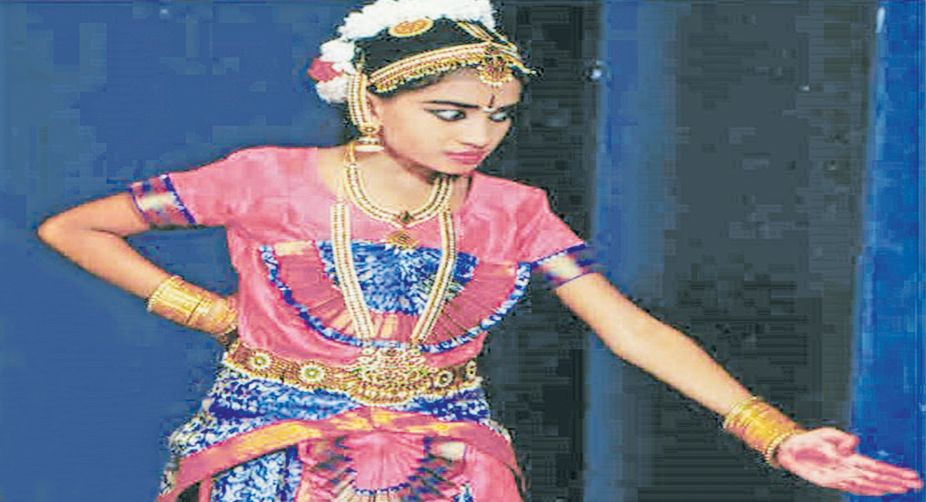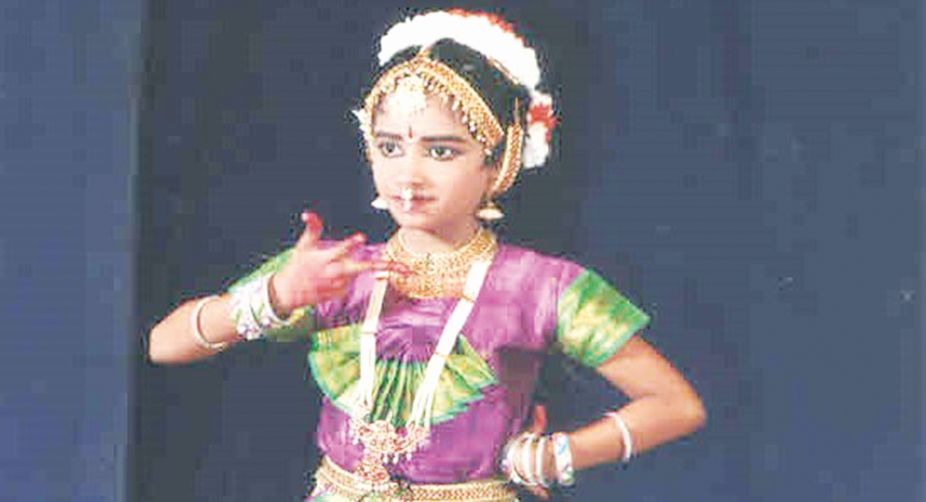Flair for Natyashastra and Bharatanrytam
A beautiful interactive session was held the next morning by Dr Padma Subramaniam on Natyashastra and National Unity with a live demonstration by Gayatri Kannan at the Kolkata Centre for Creativity.
Bharata Muni’s Natya Shastra is one among the famous trio of India, the other two being Kautalya’s Artha Shastra and Vatsyayana’s Kama Shastra

Natya Shastra
Traditionally assigned to Bharata Muni, a legendary sage, Natya Shastra is one among the famous trio of India, the other two being Kautalya’s Artha Shastra and Vatsyayana’s Kama Shastra.
All the three works form the encyclopaedia of Indian civilisation. While the major subject in Kautalya’s work is polity and government, Kama Shastra deals with man’s artistic pursuits and accomplishments.
Advertisement
Both the works leave no stone unturned in matters concerning body and mind. Bharata’s work provides exhibitions in the visual arts. All the three works speak of the glory of India and proclaim to the world that Indian education did not stop with the scriptures and the philosophies.
Advertisement
As we Indians have “no sense of history”, it is no wonder that nothing definite is known about Bharata or the date of composition of his Natya Shastra.
External evidence gives us a clue that the Sanskrit work was available to Mahakavi Kalidasa, as he refers to its author in his lyrical work Vikramorvasi. And so there is sufficient evidence to surmise that Bharata lived about 400 BCE or even earlier.

Legend has it that Brahma, the Creator, was once requested by the gods for entertainment for the eyes and the ears of all the people. Owing to overpressure of work, Brahma perhaps chose the sage Bharata to write the grammar of such an entertainment.
Presenting Bharata a copy of his Natyaveda, comprising selections from the Rigveda (recitation), from the Yajurveda (acting), from the Samaveda (music) and from the Atharvaveda (sentiments) he instructed him to make rules for everything connected with the theatre. Obeying Brahma, Bharata began teaching his work and thereby popularised it in the world.
Conceived as a series of question and answer sessions between Bharata and his “hundred sons”(sages or munis) Natya Shastra is in fact an encyclopaedia on theatre and certainly a manual for the actors on the stage.
Two versions of the text, one running to 37 chapters and the other containing 36 chapters, are available. Abhinavagupta’s well-known commentary Abhinavabharati follows the text with 37 chapters but it itself gives references to variant readings and interpolations.
Though Panini’s reference to the Natasutrasof Shilalin and Krishashvan show that there were some works on dramaturgy even before the 5th century BC, the only earliest available text is Natya Shastra.
The Natya Shastra talks at length of “natya”, a derivation from the word “nat”, meaning to dance or to act. The work provides the basic source of information on the intricacies of Indian theatre.
The mythic origin of dramatic art, the construction of playhouses, the detailed preliminaries, the treatment of “rasa” and “bhava”, the different types of abhinaya-aharya (costume and make-up), vachika (verbal), angika (gestures and dance movements) and sattvika (indicating mental reactions) — dances, footsteps, songs, modes of address, classification of the story (itivritta) which form the body of the theatre, the sandhi-sandhyanga division of the plot, et al.
And the last chapter appeals to the honest and diligent followers of the Shastra to bless the work.
Audience play a major role in any play, avers Bharata. Since freedom is given to them to praise a play or mar it, Bharata’sNatya Shastra prescribes certain qualifications for the play-goers. They should express their reactions either by clapping their hands, or by laughing louder or by uttering exclamations as the occasion demands. These forms of encouragement are bound to inspire the actors on the stage to perform their duties to their utmost satisfaction.
But this they should do with no intention of disturbing the play. If the audience is mad after marring the play, they should by all means identify the reason for its failure. What is it due to? Human factor or natural factor? But Bharata is against sweeping statements. He recommends competitions to be organised and suggests that only qualified and sympathetic judges to participate. He tells us also about how and what distance the judges should be seated.
Make-up, costumes and other paraphernalia, Bharata believes, help to communicate the play to the audience. He prescribes specific make-up to everyone entering the stage.
Be you god, demon, king, queen, servant, you have to put on the prescribed make-up, costume, jewellery, weapons, et al. It is love or hate at first sight. The very appearance of the character should speak volumes to the audience. Love the god and hate the demon. Love the hero and hate the villain.
Bharata prescribes a number of details concerning emotion and feeling to be expressed by the actors. He meticulously describes the art of such expressions in stylised tones and gestures suiting the status of the character.
Special directions are also given regarding different kinds of loving and pining heroes. It is no wonder that Sanskrit plays have mostly love as their theme. And that speak for the immortality of the plays, as Love is ansurely eternal and everlasting theme.
Oh, is that the reason why Shakespeare’s plays are read even today? We can also find the rules about how the times of the day or asides are to be conveyed on the stage.The different types of characters and their characteristics are beautifully explained and the present day directors of movies would find ample guidance to the art of choosing artists and distributing the roles.
Since music is recognised as the food of love all over the world, Bharata plays on. He considers music under two heads— instrumental and vocal. The four kinds of instruments — stringed, percussion, solid and hollow.
In the ‘stringed’ variety, the orchestra consists of a singer and players of vipanchi, veena and flute. In the “percussion” orchestra the mridanga, panava and dardura accompany the actors. The trio — instrumental music and natya — must be used like “a firebrand moving in fast circles”.
Bharata explains the seven swaras (notes) and tells us of the human throat and the veena as their source. There are rules in handling the musical instruments, leave alone playing on them. It is quite amazing to read about the place where orchestra and singers are to be seated.

The Natya Shastraspeaks of the rasa and Bharata’s aphorism on rasa realisation is quite well known. He explains of the eight emotional states with their corresponding rasas. It is clear that to his list of eight, “shanta” was added by later writers, thereby making it nine (navarasas) and complete.
Bharata also speaks of 33 minor fleeting feelings like bashfulness, anxiety and indignation. Spontaneous and involuntary reactions like perspiration and tears are also mentioned.
A detailed treatment of Sanskrit prosody makes the work interesting to poets and writers. But what is really more interesting is the information that Bharata provides as to how drama and dramaturgy were brought to the mortal world.
And what is more interesting than all such information is Bharata’s rule that discouraged the performance of tragedy on the stage. But this is not to say that a play containing a tragic episode was discouraged but a story ending on a tragic note. Bhasa broke such a rule for he wrote tragedies too.
Indian drama from the earliest times was shaped by Bharata’s Natya Shastra. Not only were its rules strictly followed by eminent classical dramatists whose plays were performed in temples and palaces, but were also obeyed to the core in the common man’s theatre. The work remained a source book for scholars and writers of drama and inspired several other treatises.
Today it is a different story. The more was the work revered and obeyed, the quicker was it lost. With the arrival of the British our Indian theatres underwent a dramatic change. Influenced by European theatres, our Indian theatres too are changing.
Is this what we call change with the times? Yet Bharata’sNatya Shastra clears all our doubts about how dance and drama were performed in our country of the pre-Christian era, enjoying patronage and popularity.
While women in England had had to wait till Charles II came back to power (1660) and allow them to perform on the stage, it is really heartening to note that in our country female roles were performed by women in those days of yore. Thanks are owed to Bharata for giving importance to women to perform on a par with men.
Advertisement